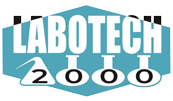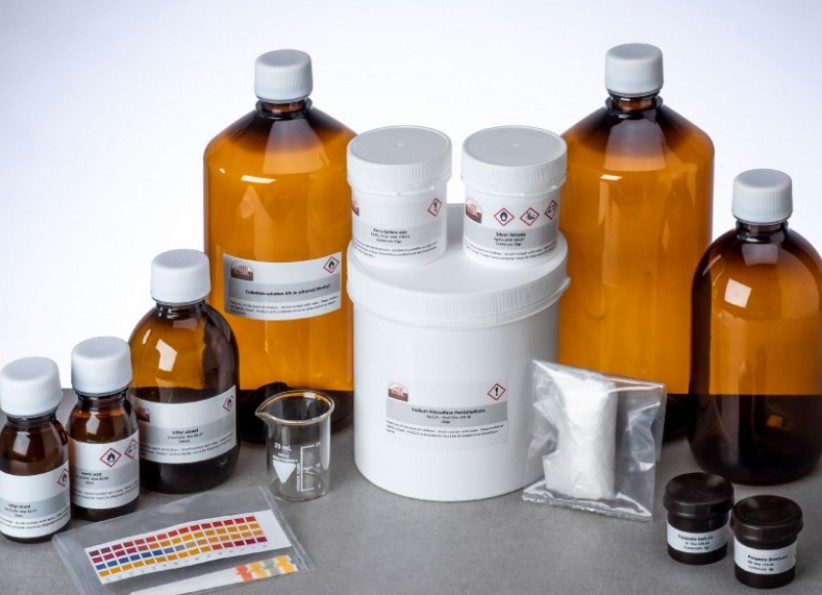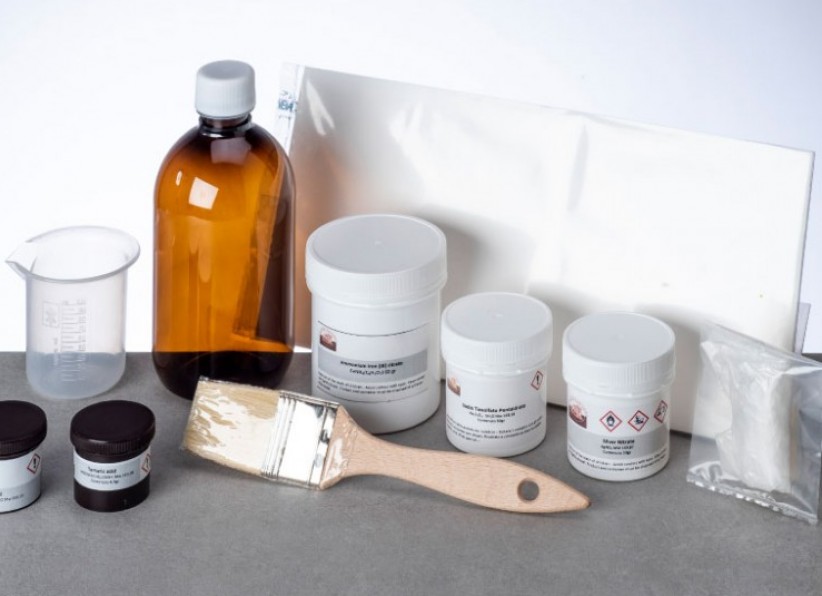This formulation, created by the chemist Mike Ware, takes advantage of the same classic cyanotype’s chemists, but processed in order to obtain a unique solution, stable in time, to be used for making paper. The only variant is the replacement of ammonium iron citrate iron Ammonium oxalate.
The procedure is more laborious of the classical cyanotype, in fact, it is preferred to prepare ready-made sensitizer in Pack of 100 ml you can find in this kit.
However, for those who want to prepare it yourself, here we give the proceedings: (chemists are available on this site in the reagents area).
sol. A Measure 20 cc of distilled water from a measuring cylinder into a small pyrex glass beaker, heat it to ca. 70 °C (160 °F), and completely dissolve 10 g of potassium ferricyanide in it, with stirring. Keep this solution hot.
sol. B Measure 30 cc of distilled water likewise into another beaker, heat it to ca. 50 °C (120 °F) and dissolve in it 30 g Ammonium Iron(III) Oxalate.
Add 0.1 g of solid Ammonium Dichromate to the Ammonium Iron(III) Oxalate solution and dissolve it.
Now add the hot Potassium Ferricyanide solution to the Ammonium Iron(III) Oxalate solution, and stir well. Set the solution aside in a dark place to cool to room temperature and crystallise – it will take about one to two hours.
Separate most of the liquid from the green crystals by filtration (Whatman no. 1 paper, or even coffee filter paper is ok). The green solid (Potassium Iron(III) Oxalate) is disposed of safely (somewhat poisonous – but not dangerously!). The volume of solution should be ca. 60 cc.
Make up the yellow-green coloured solution with distilled water to a final volume of 100 cc. The sensitizer can be made more dilute (e.g. up to 200 cc): it will be faster to print, but yield a less intense blue. Filter the sensitizer solution and store it in a brown bottle kept in the dark; its shelf life should be at least one year.
Paper coating must be carried out in security light.
Chemicals used in this procedure are considered toxic and unsuitable for human or animal consumption. The user must be aware of the risks and make every effort to protect living beings and the environment. Chemical waste should never be emptied into drains or dispos ed of together with household garbage. For proper disposal, consult your local landfill









